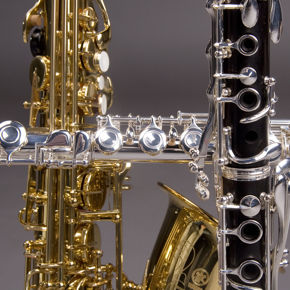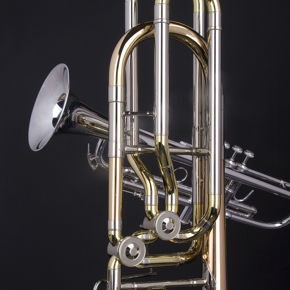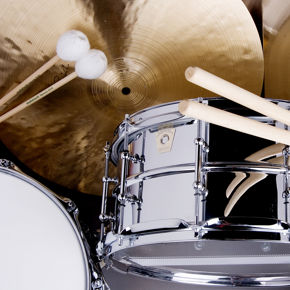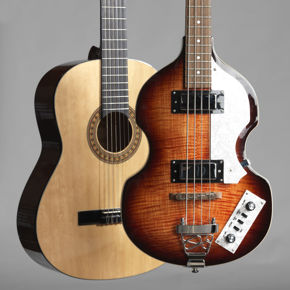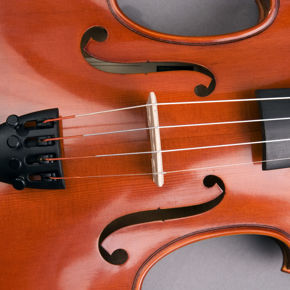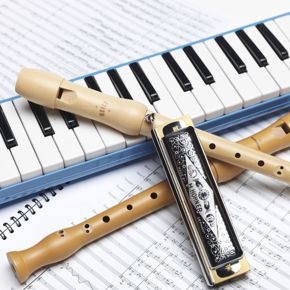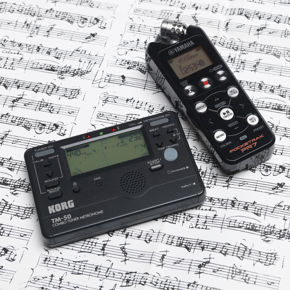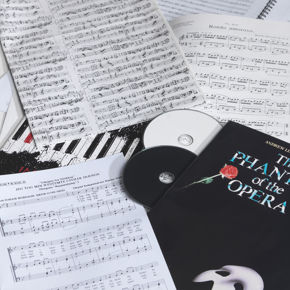Gaia Symphony
1. Tsunami
2. Window 1(Water-Fire)
3. Wildfire
4. Window 2 (Fire-Air)
5. Aurora
6. Window 3 (Air-Earth)
7. Men of Stone
Composed: 1991 2003
Duration: c. 65 mins
Instrumentation: Brass Band
Commissioned by: the National Youth Band of Wales and the Buy As You View Cory Band (in association with the Arts Council of Wales)
1st performance: 10 July 2005, Cheltenham Music Festival
Published by Kirklees Music
Description
The idea of attempting a large-scale work for brass-band of over an hours duration only emerged gradually in the course of its composition. The first part to be written was Wildfire, the second movement of the present work. This was commissioned in 1991 by the Arts Council of Wales for the National Youth Brass Band of Wales. Four years later, the same organisation commissioned the Symphonic Suite Men of Stone and while working on this I began to perceive thematic connections between the two works that went beyond mere similarities of style and medium.
Most importantly, the imagery of Men of Stone encompassed, among other things, all four classical elements: earth for the Avebury movement, air for the blizzard scene of Castlerigg, water for the seascape of Barclodiad y Gawres and fire for the climactic midsummer scene of Stonehenge. Earth, however, was the dominating element behind the whole of Men of Stone and it occurred to me that, with the self-evident fire imagery of Wildfire, the remaining elements, water and air, might be also be included as part of a much bigger scheme that might further develop the existing musical links. Additionally, the four-in-one nature of Men of Stone (the obvious finale to such a grand scheme) might serve as a summary of the entire large-scale structure.
Realising this scheme was not straightforward. The very few performances that Men of Stone and Wildfire received in the years immediately after their completion convinced me that there was little point in writing any more music for brass band and the project was placed on indefinite hold.
The story now moves to 2001 and a phone-call from Robert Childs. Bob had tutored the NYBBW during some of its performances of the earlier pieces. Now, having taken the BAYV Cory Band to success in both the 2000 National and the Open Championships, Bob explained that he was keen to broaden the bands musical horizons. Both of my earlier works were soon performed, broadcast and recorded by Cory and I was appointed composer-in-residence to the band with a specific view to completing this large-scale project..
Bob had also taken over as principal conductor of the NYBBW and it seemed appropriate to involve them too in the creation of the remaining pieces. Tsunami was completed in 2002, with Aurora following a year later. Though both were premiered by the NYBBW (the latter piece conducted by Nicholas Childs), Aurora in particular was composed with the specific qualities of Cory very much in mind.
There remained the question of how to connect the four parts. This was a problem, because it was becoming apparent that the whole scheme was not just a collection of four separate pieces, but a single entity comprising four autonomous, but deeply related, elements. I resolved to connect them together. However, this immediately raised musical and practical problems. For a start, the continuous unrelieved sound of the brass band might well become tedious over the course of more than an hour; secondly, no band in the world could possibly have the stamina to sustain a continuous piece of such unparalleled length.
The first solution was to provide electro-acoustic interludes, but I abandoned this idea at an early stage. The guiding principle behind all my music is that it originates in my inner ear if I cannot hear it in my head then I cannot write it. Electronic and electro-acoustic music, much as I admire a great deal of it, is something I never hear in my head. To create it would involve experimentation in the studio and this is something I cannot in all conscience do. Instead, I decided to write three short movements for percussion ensemble Windows as I came to call them: openings in the continuous wall of brass sonority which offer a glimpse of another kind of sound world. They also act as transitions between the movements and give the brass players (though not the conductor!) a few minutes of much-needed recuperation.
Even before I completed the project, some people were already referring to it as a symphony. Personally, I was extremely wary of the term; I have written three numbered symphonies and have fairly strong views about what a symphony should be. However, I gradually came to feel that symphony was indeed the correct term, because of the thematic and structural links between the movements and also because the whole piece undeniably has the outlines of a traditional four-movement symphony, with a complex opening movement, followed by a scherzo, a slow movement and a more discursive finale. True, the four individual pieces are complete in themselves, but I feel the experience of them is enhanced when they are heard in the wider context.
Another way of viewing the whole structure is to compare it with the portmanteau Hammer horror films that were popular in the 60s and 70s. Typically, these featured several short stories, all related by common characters and subjects, and usually linked by a separate connecting narrative between the main stories. In my work, as well as connecting the main movements, the three Windows trace their own separate narrative in that they gradually move from rhythmic regularity in Window 1, via an elaborate counterpoint of different pulse-rates in Window 2, to rhythmic flexibility and no regular pulse at all in Window 3. The main movements themselves also show a progression in mood and metaphor, from catastrophe and destruction in the first two movements to more benign imagery in the last two (the final movement being the only one concerned with the human impact on the world).
The Gaia part of the title reflects the symbolic connection of each movement to natural phenomena. Gaia was the Greek goddess of the earth the daughter of Chaos. Gaia is also the name given to the theory pioneered by the distinguished British scientist James Lovelock which proposes the earth itself to be a living, self-regulating organism. The idea has been enthusiastically adopted by various ecological organisations and has often been distorted in the process. If I understand it correctly, Gaia Theory offers something more original and uncomfortable than the customary concerns about saving the planet for future generations. Instead of an essentially anthropocentric view, Gaia takes the much broader view that the earths colonisation by humankind merely marks a certain point in its history and, in global terms, is no more significant than, say, the age of the dinosaurs. Like them, we shall ultimately be wiped out either by our own ingenuity (which will be a unique achievement) or by a catastrophic external intervention, like a comet or an asteroid and the colossal damage we continue to inflict on the earth will eventually be healed (although the human race will presumably not be around to see this). From an artistic point of view, I find the cyclic nature of this idea strongly compelling even if it does imply a limited future for my own and any other artists creations.
© John Pickard 2004

